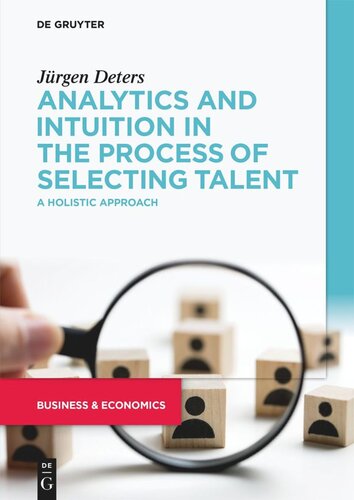

Most ebook files are in PDF format, so you can easily read them using various software such as Foxit Reader or directly on the Google Chrome browser.
Some ebook files are released by publishers in other formats such as .awz, .mobi, .epub, .fb2, etc. You may need to install specific software to read these formats on mobile/PC, such as Calibre.
Please read the tutorial at this link: https://ebookbell.com/faq
We offer FREE conversion to the popular formats you request; however, this may take some time. Therefore, right after payment, please email us, and we will try to provide the service as quickly as possible.
For some exceptional file formats or broken links (if any), please refrain from opening any disputes. Instead, email us first, and we will try to assist within a maximum of 6 hours.
EbookBell Team

5.0
20 reviewsHuman decisions, especially in management and personnel selection, are based on making judgments about people analytically and intuitively. Yet in business and scientific contexts, judgments are expected to be based on a rational analysis rather than intuitions or emotions. Intuition is often seen as something mystical that should not be trusted and thus eliminated from human decision-making.
Our empirical and theoretical research shows that this is impossible when people are dealing with people. Instead, intuitions and emotions have significant power in the decision-making process. Neuroscience even shows that humans are incapable of switching off their emotions or intuitions when making decisions. Therefore, intuition and emotions as evolutionary achievements of human beings should be looked at more closely to use the wisdom they offer.
This book provides an insight into the current state of research on rational-analytical procedures in personnel selection and complements this with research on intuitions and emotions in personnel diagnostics.
By integrating scientifically verifiable rational-analytical decision-making procedures with the inner experiential knowledge of people, this book bridges two complementary ways of recognizing and making good decisions. It demonstrates how intuitions are developed and used in different fields of practice and cultures and how scientific research results from rational-analytical and intuitive-emotional selection procedures are successfully integrated by practitioners.